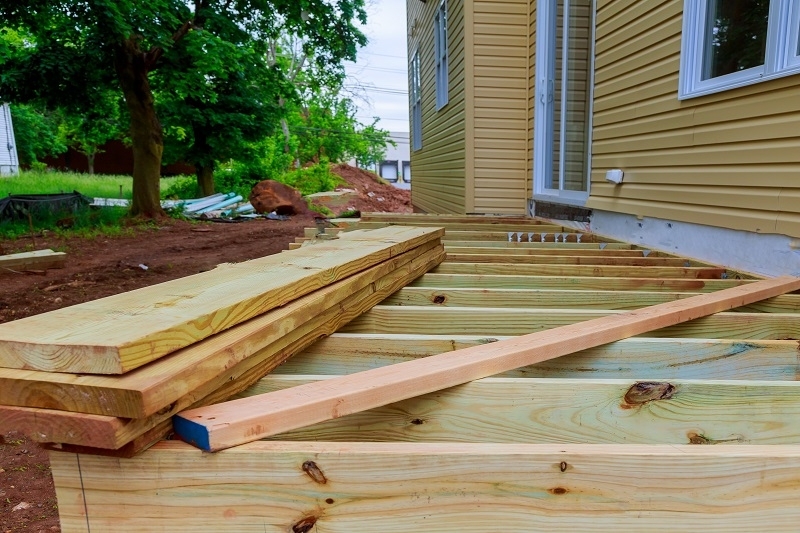What to consider when designing your timber decking?
Published: 09/11/20 By: Mike Bekin
Decking is a popular choice in gardens and is often an easier alternative to paving (it is definitely lighter). It can work for anything – from garden patios through to external restaurant areas and even beach-front piers.
However, with such a range of uses, there is much to consider when choosing the right timber decking for your design.
Decking provides the perfect oasis for enjoying outdoor dining or relaxing in the sun. An absolute bonus is that timber decking looks good anywhere and can be either contemporary or traditional in design.
As with any build project, there are considerations to be made to make sure the area is fit for purpose and to keep tight reins on the budget. It’s important to consider lots of aspects when laying a new deck.
Here are some questions to take into consideration for your timber decking:
What is the terrain like?
Is the area flat, sloping, or bumpy? If the answer is the latter, you may want to consider calling in specialist landscaping contractors who can safely operate diggers or soil compacting machinery.
Depending on the size of the area, there might be a lot of extra considerations relating to labour costs. Especially if it needs to be levelled or built up to accommodate the set requirements.
Where will the decking be built?
Is the timber decking to be wholly in the sun or a shaded area? If a mix of both, will there be natural shading, or will the design require a pergola or screen for protection against a prevailing wind and bad weather? Location will determine the type of timber to use. Will trees, shrubs, boundaries, and buildings provide privacy but increase cleaning and maintenance?
The great thing is that almost anything is possible to incorporate: features such as planter boxes, seats, trellis, pergolas, storage boxes, sandpits, and ponds. Don’t forget there will probably be the need for a handrail and balustrade.
Timber comes in various species, strength and durability grades and for raised level decks you will most likely need to use the appropriate structural grade, for example, grade C16 or C24.
In these cases, it’s best to enlist the help of a structural engineer to help specify the joists and decking spans and strength grades.
What will the decking be used for?
Is the deck intended to be a private space for a domestic property – or will the decking be for public use with heavy and constant footfall like a beachfront pier? Is the deck primarily for adults, for entertaining or for family use with a children's play area – in which case, will it become slippery and need regular cleaning or the addition of anti-slip strips? Defining the type of use will help you determine your decking needs including what profile: smooth, reeded, or grooved.
What weight will it need to accommodate?
Decking areas are often used to support hot-tubs or free-standing swimming pools. These hold exceptional weights in which case you’ll need to factor such loads in the substructure calculations
Or, perhaps it will be used as a base for a garden pavilion, shed, conservatory, or summer house to be added later? If so, you will need to make sure that the structural specification of your deck will stand the test of time.
Specifying your materials
Hardwoods are more expensive but offer greater durability without the need for chemical impregnation. They are often also stronger, so provide better value when heavier loads are designed.
Impregnated softwoods, however, are usually the cheapest, but they are also less durable and strong. However, as long as you take care of it during and after installation, then there’s no reason why your decking shouldn’t last for at least a good few years.
While they are most often hidden from view, the joists are going to be the parts of the structure that take most of the weight and can also be subject to shade and moisture. This means they need to be as durable as possible.
Wondering what type of board to use for the surface of the deck? There is a wide range of timbers and styles available providing variations in grain, pattern, and colour depending on the look and feel you’re going for.
Stainless steel screws are often used when fixing decking. Joists are a vital part of the decking structure as they are quite literally what holds everything together. Learn about decking substructures here.
If you would like to find out more about our timber decking, please get in touch. Call us on 0345 638 1340 – or drop us an email at sales@ecochoice.co.uk.
Image: ungvar / Shutterstock.com
